
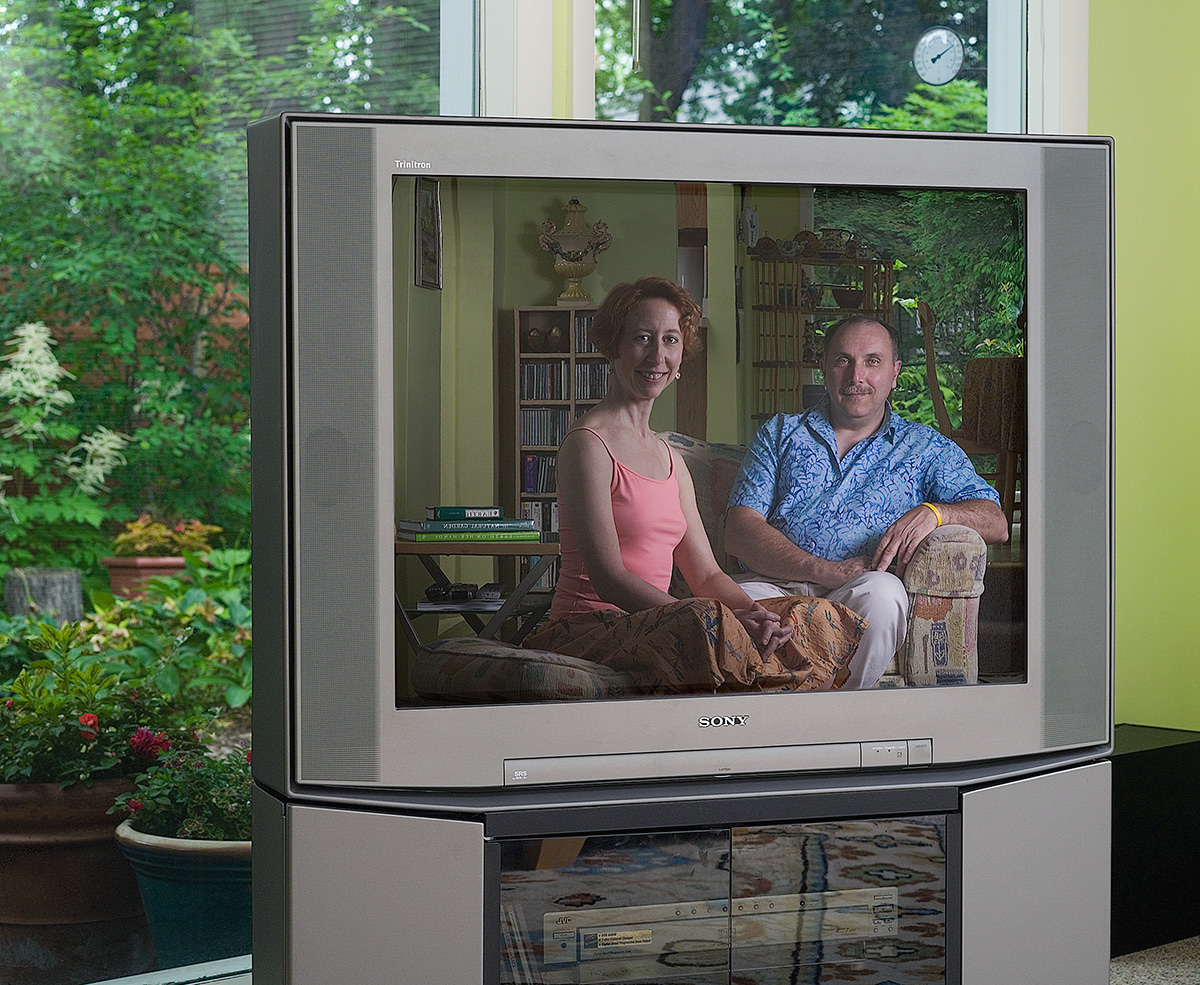
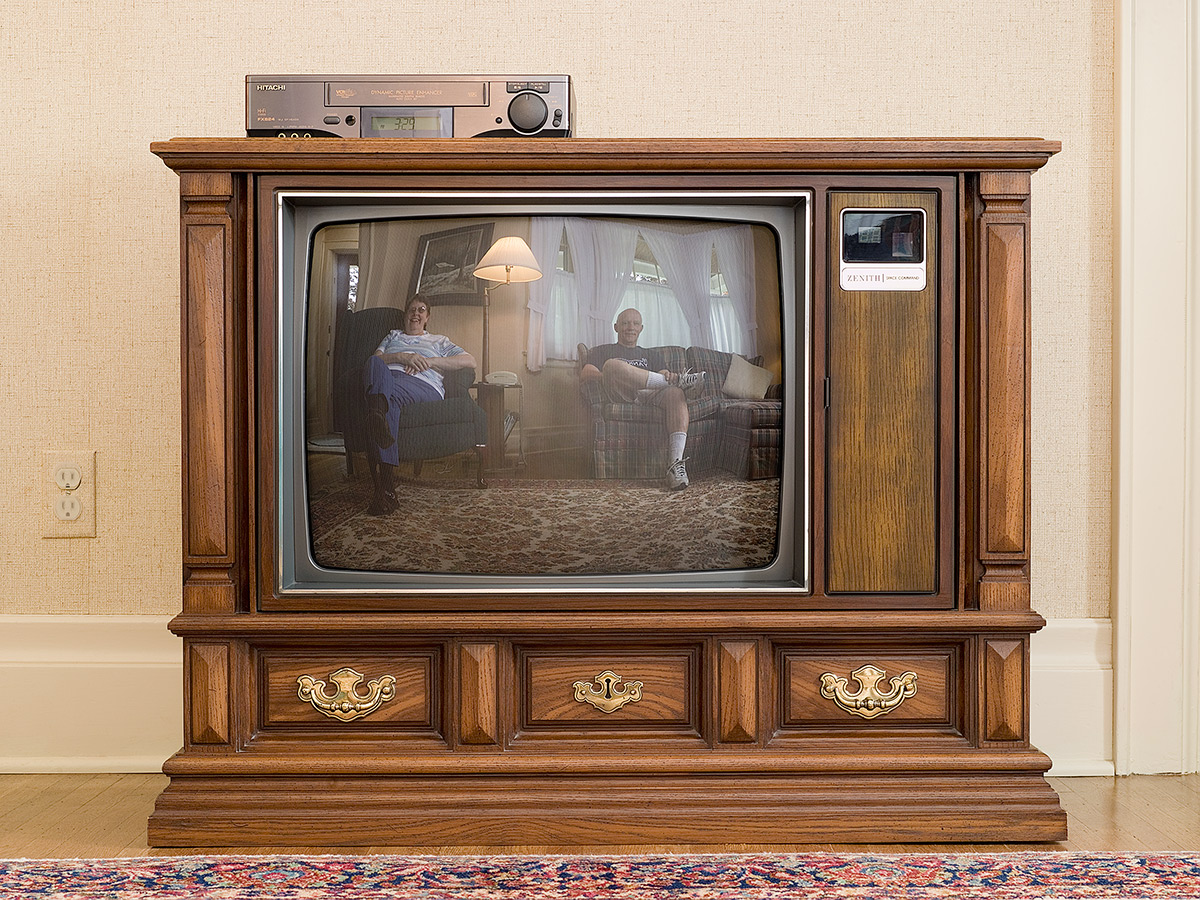

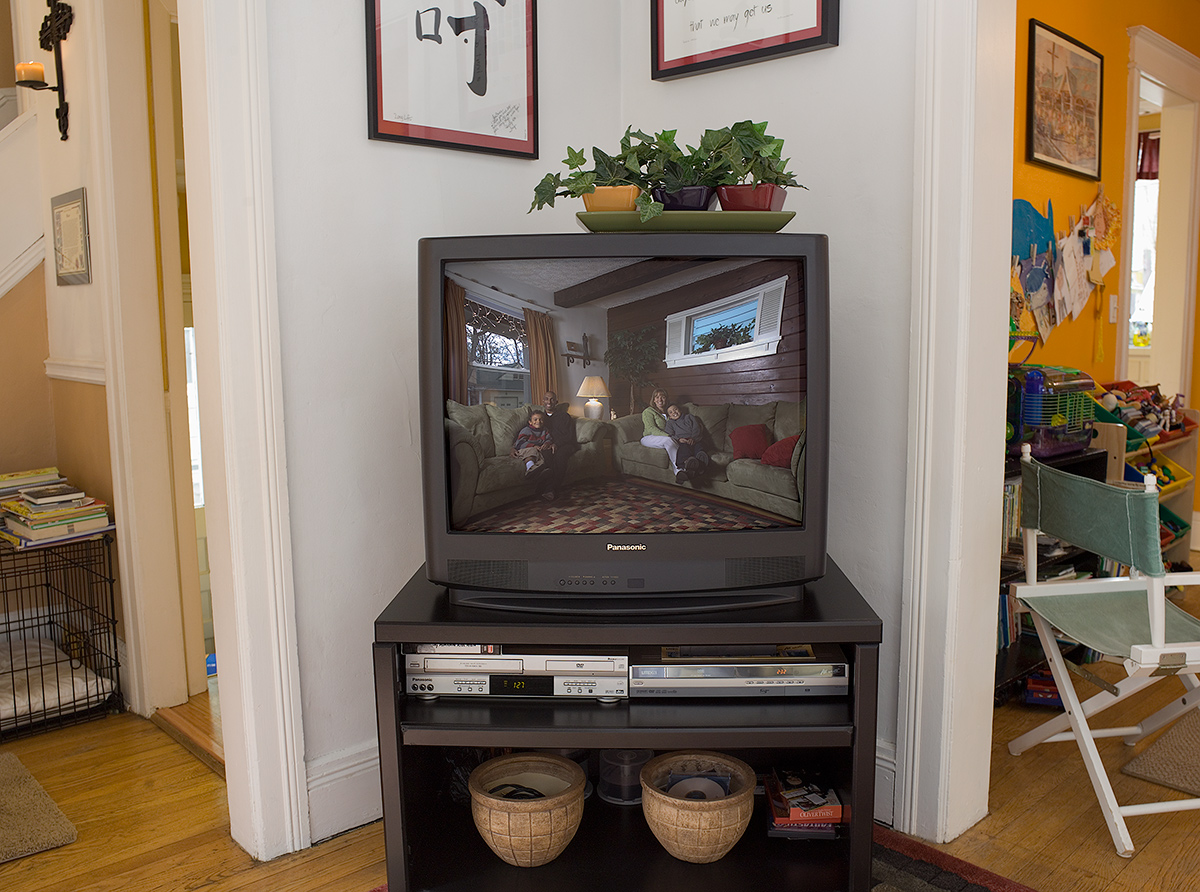
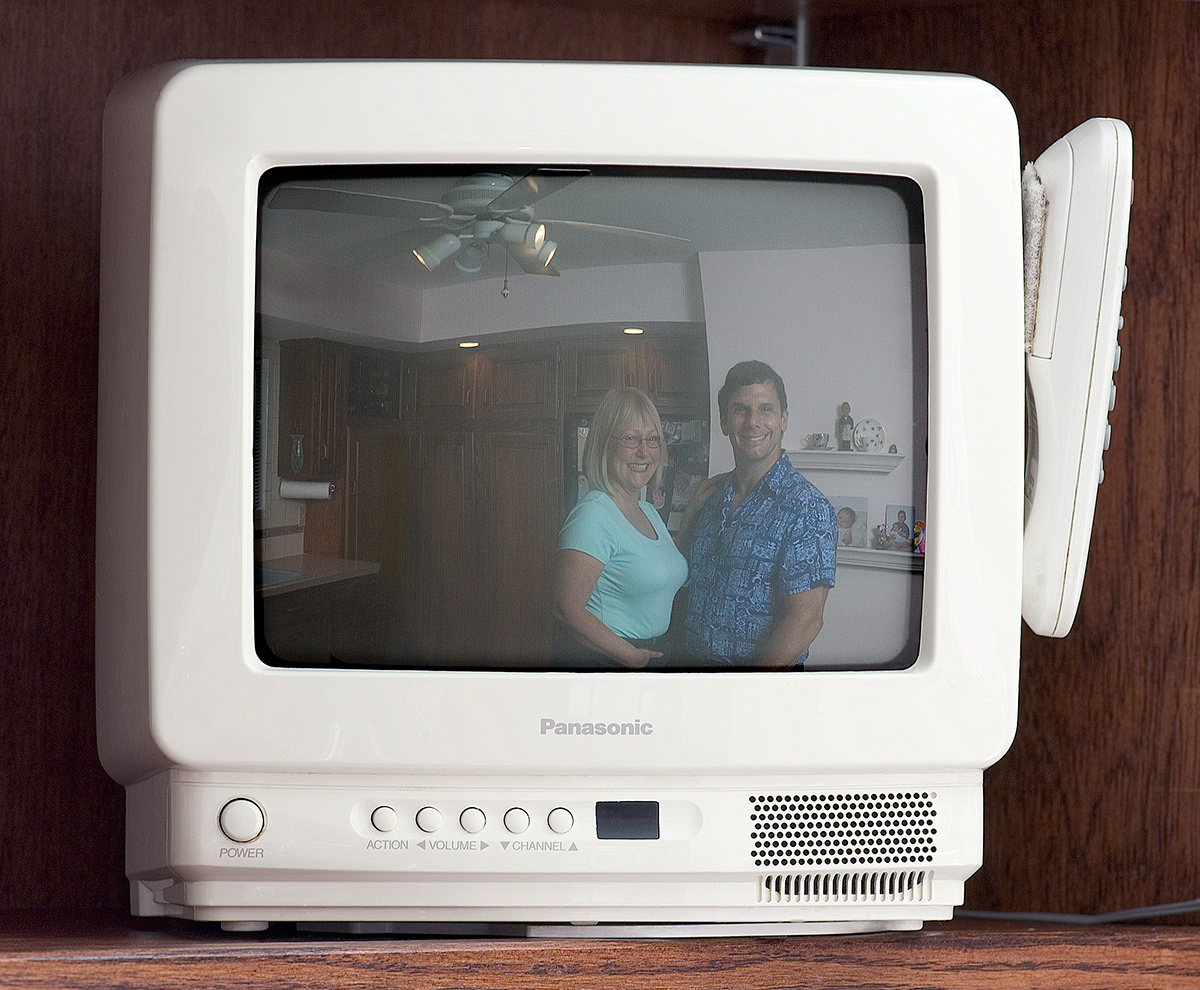
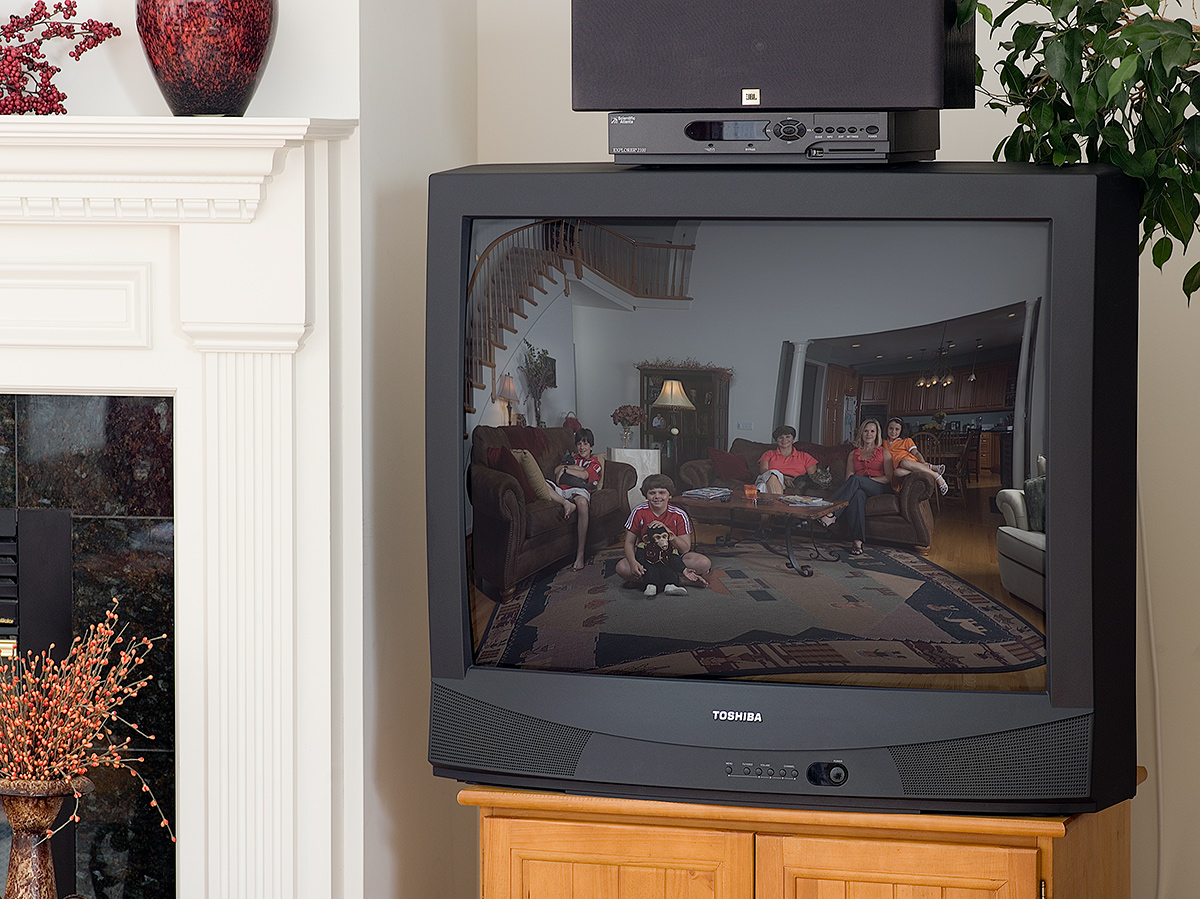

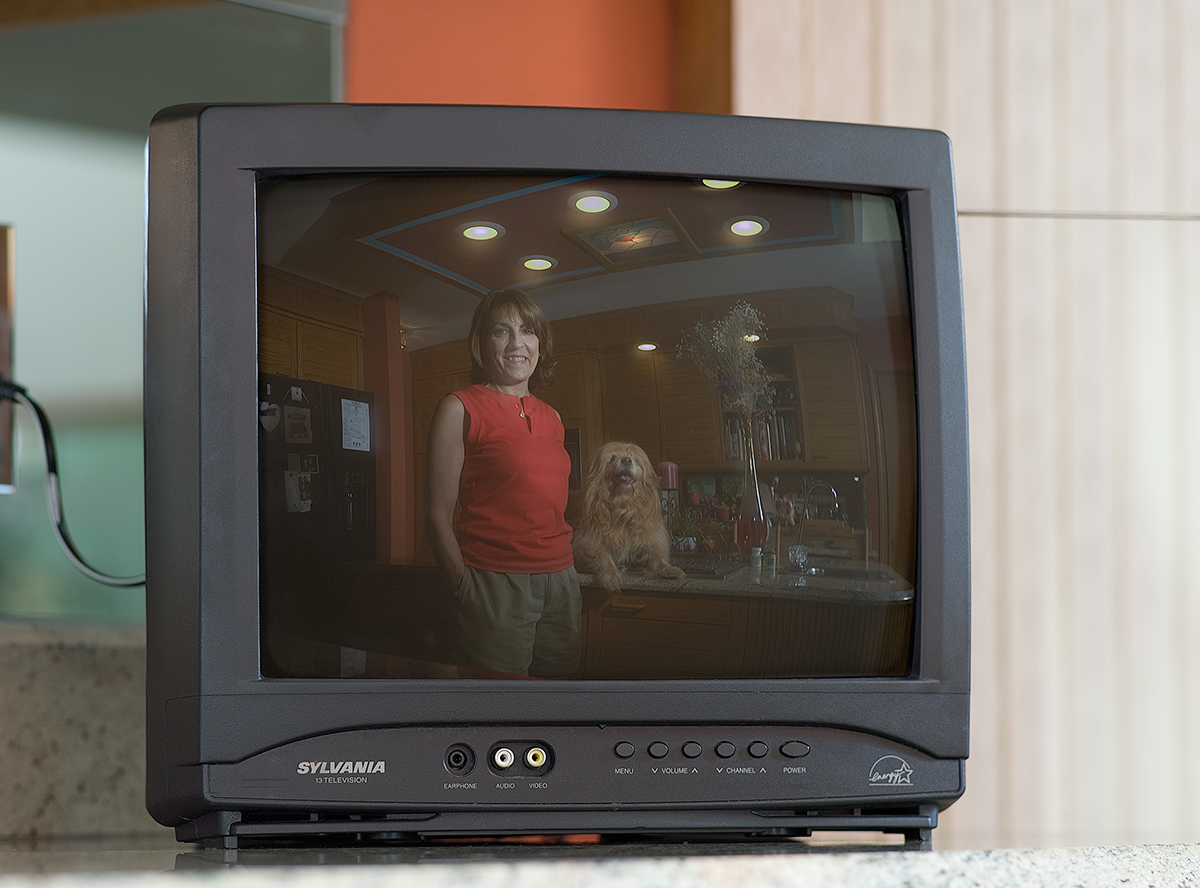

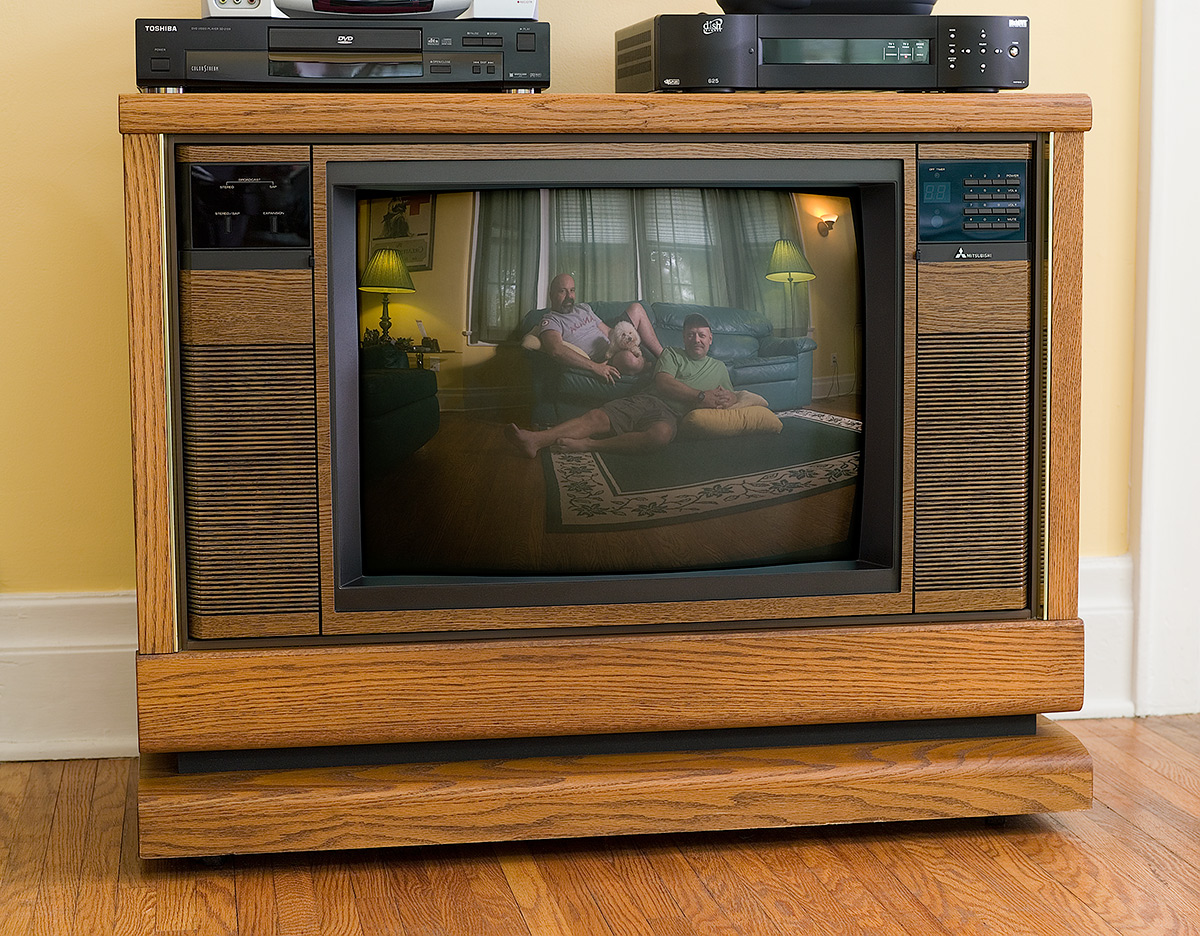

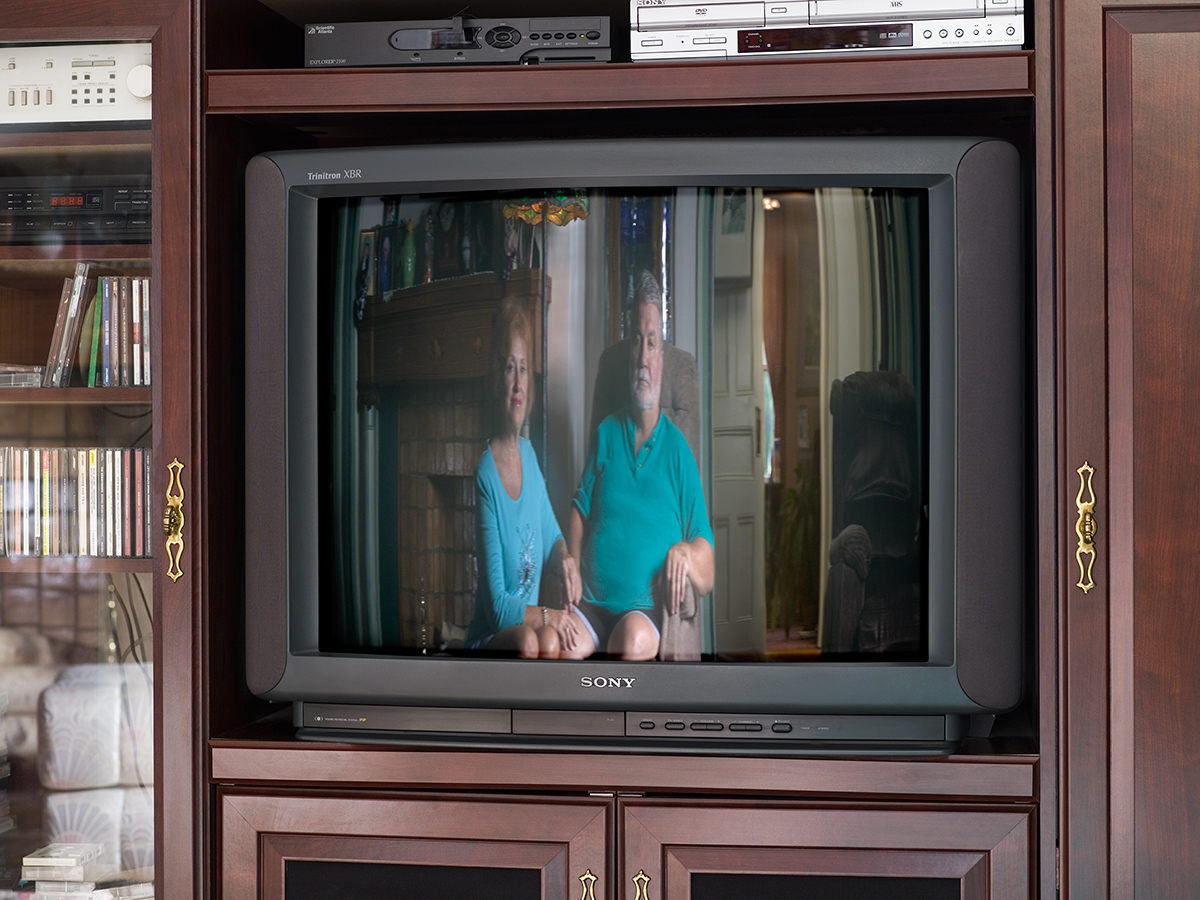
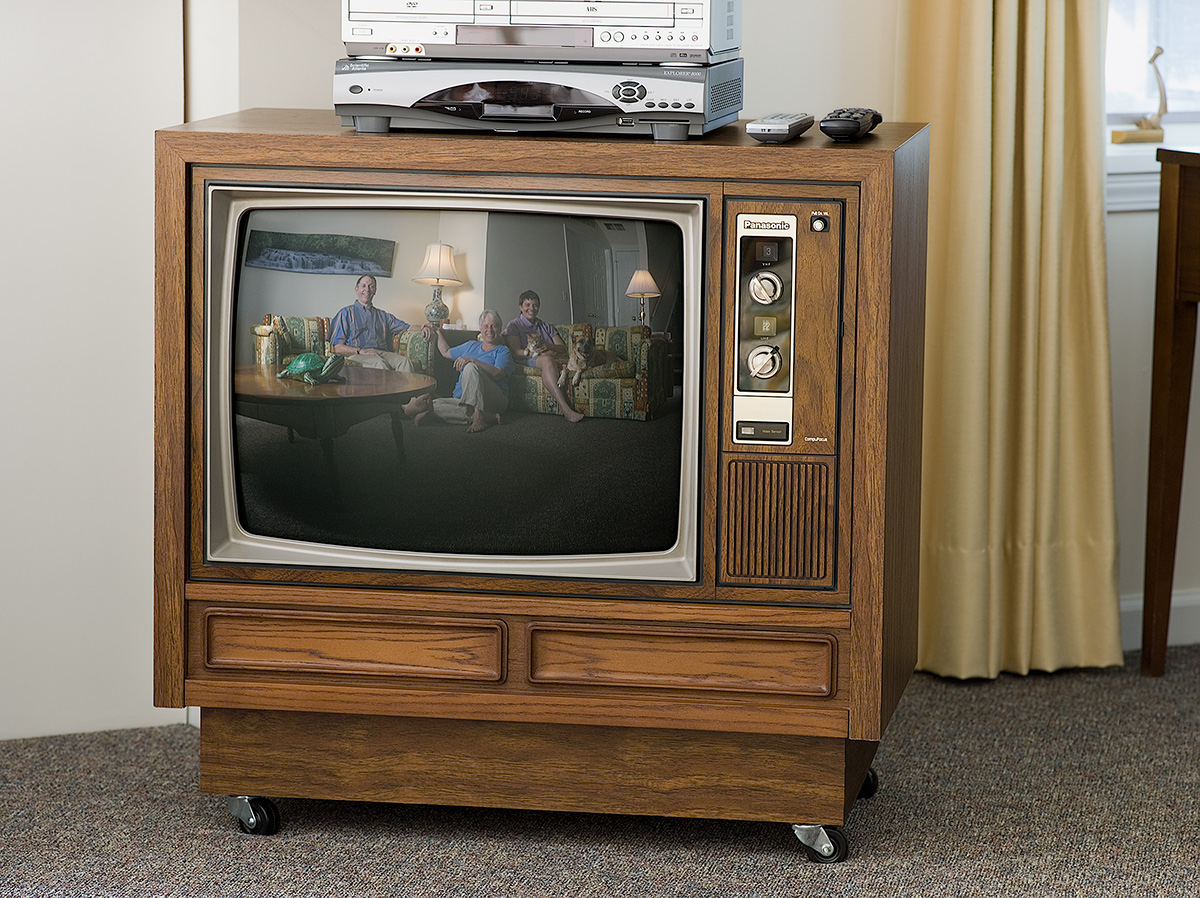


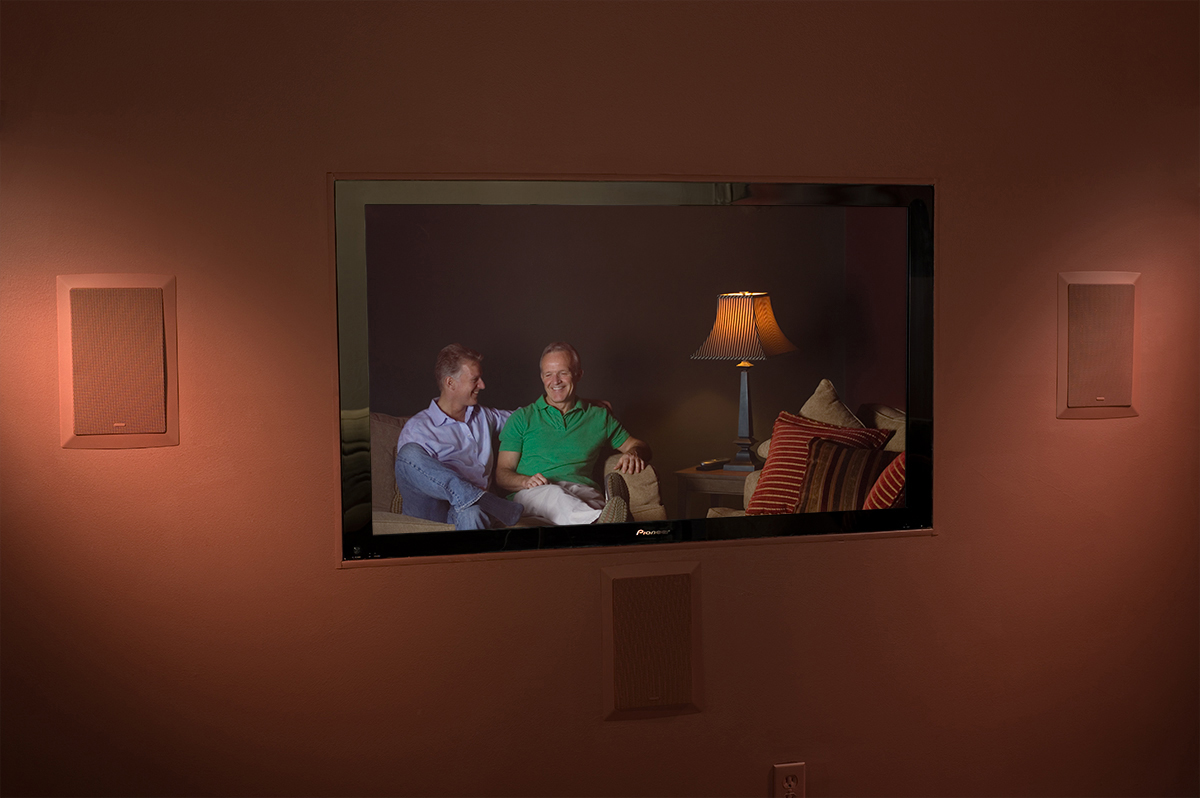
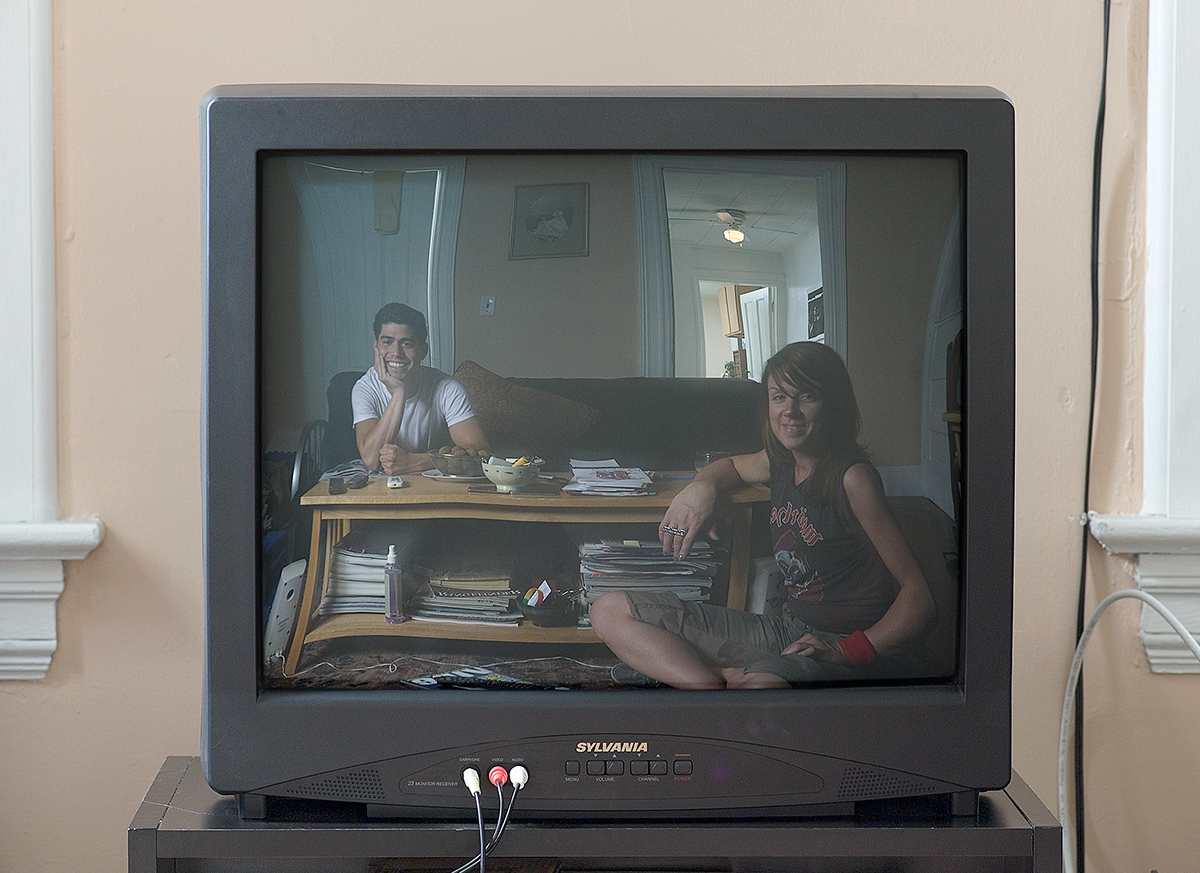
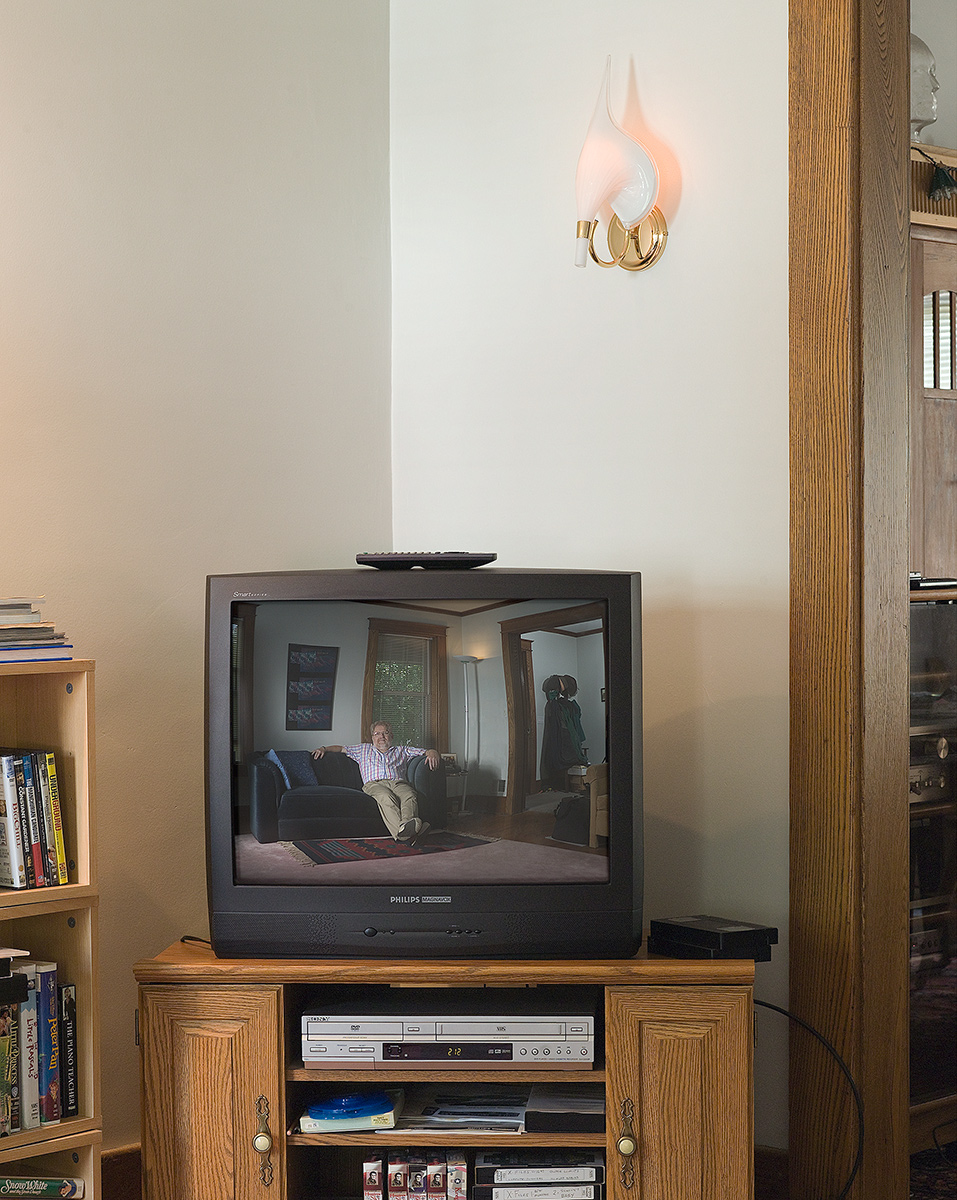
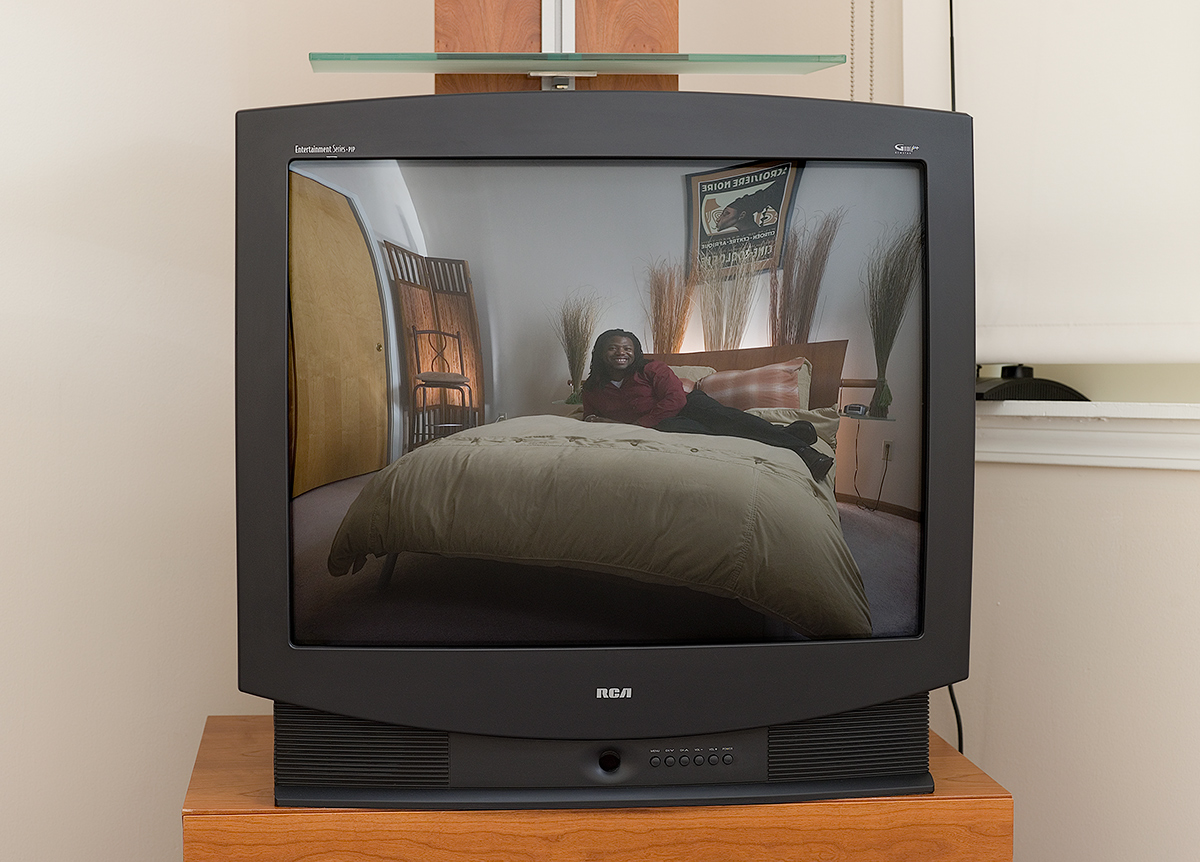
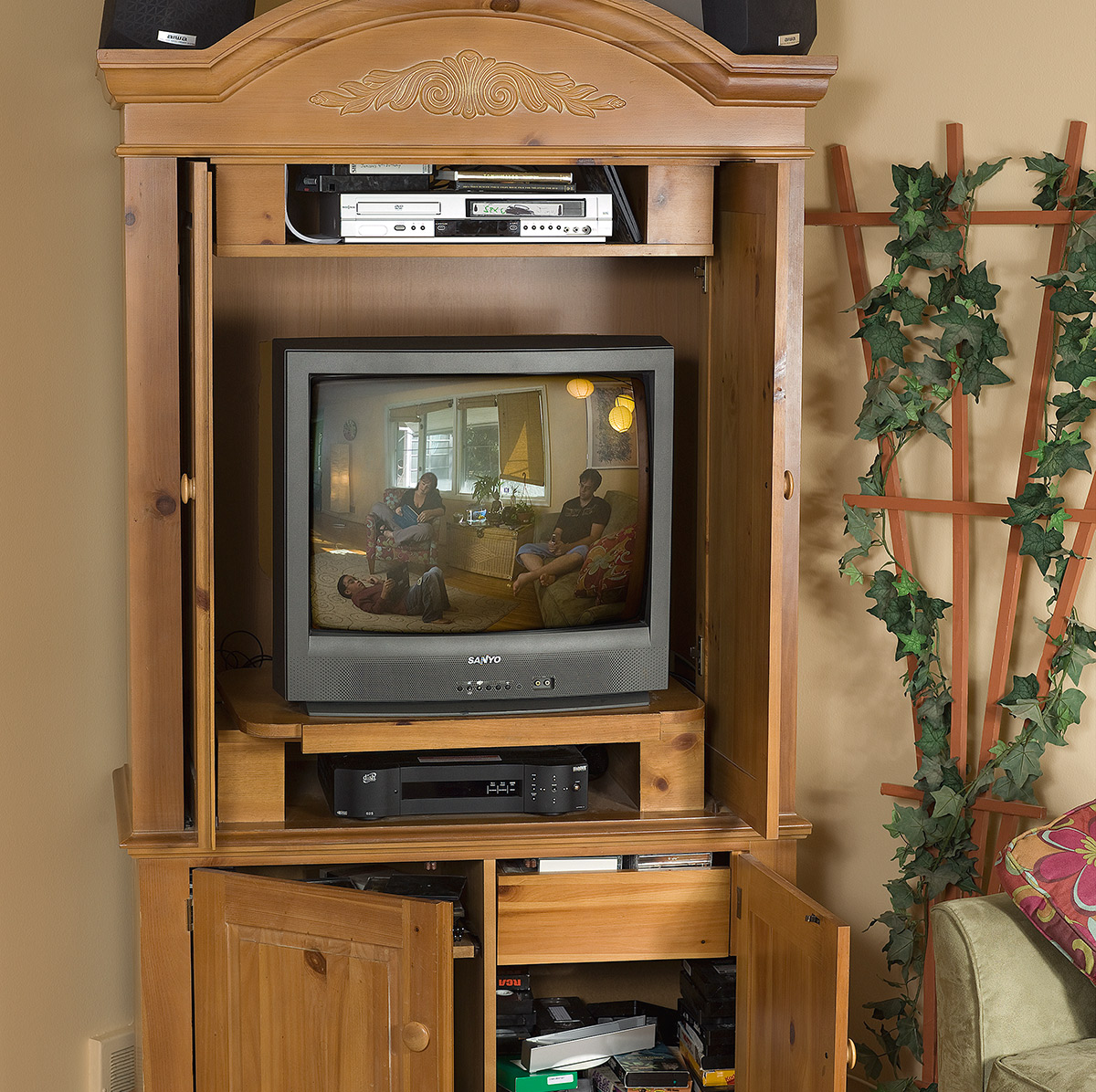



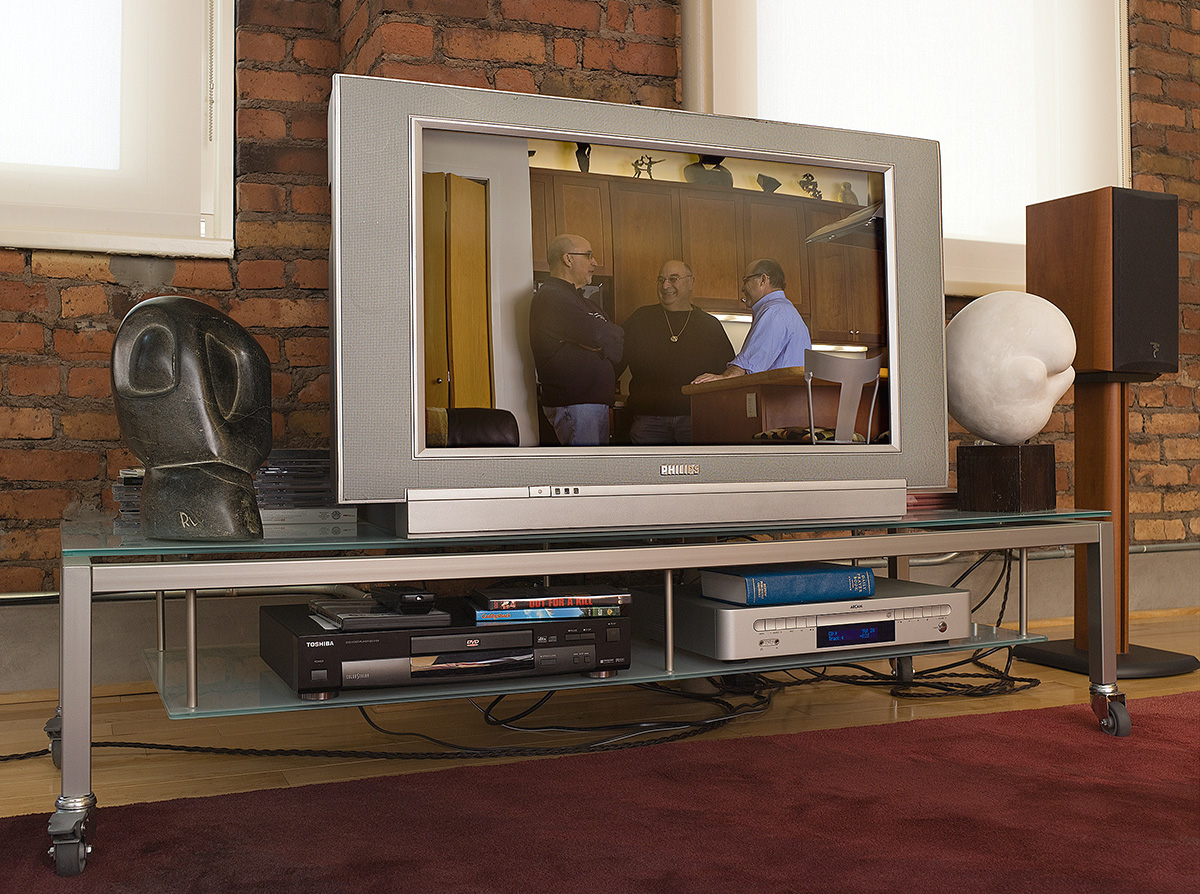
Television Portraits
This series examines the ubiquitous television and it’s authority in our homes. Through the staging of portraiture, I photograph the resident’s reflection on their inactive television set by enhancing the screen’s mirror image with artificial light. Each photograph examines two alternate dimensions of a room, one in the television screen and the other of the room containing the television.
Fascinated with the cultural phenomenon of reality television and reflecting on the influence of media on the construction of our collective identities, as well as the artifice of the medium, I draw upon conventional photographic studio portraiture to pose my subjects. As portraits, my photographs look at the contemporary home in our society and identity through mass media. Much like these reality shows, the television photographs appeal to our sense of voyeurism and address the question of reality vs. representation.
My self-portrait was the beginning of this photographic series and partially demonstrates the construction of the shot. In the remaining photographs the camera is retouched out of the mirror image to visually remove the photographer from the screen. This leaves the audience questioning, at first, whether the television is tuned to a program, playing a video, or if they are observing a reflection. The visual clues that indicate the screen image is a private room includes the image deformation, repetition of certain elements in the environment, the television being in the ‘off’ position, and the tonal change of the screen image.
The series draws from the history of social documentation of such artists as Bill Owens who photographed the ordinary lives of American suburbia in the 70’s, as well as the tradition of portrait photography that began with the invention of the daguerreotype. My images look at the prominence of the television in our residence and the influence of the set on domestic design, each reflecting the personality of the residents. Lee Friedlander addressed the emergence of the ubiquitous TV in the 1960s in his series The Little Screens. His images are devoid of the human presence other than the broadcast on the screen to address the isolation of this medium. Today we are more interactive with electronic media; we connect every day with screens from our televisions, movies, computer, and hand held devices, blurring the lines between public and private spaces. How these screens frame our world, reflects on our lives.